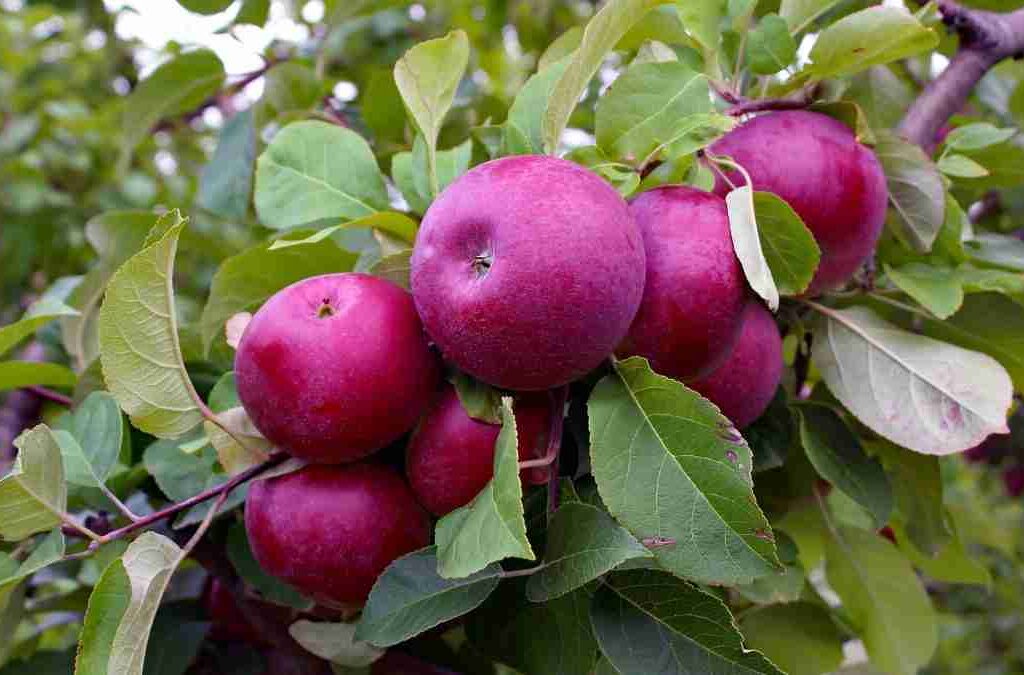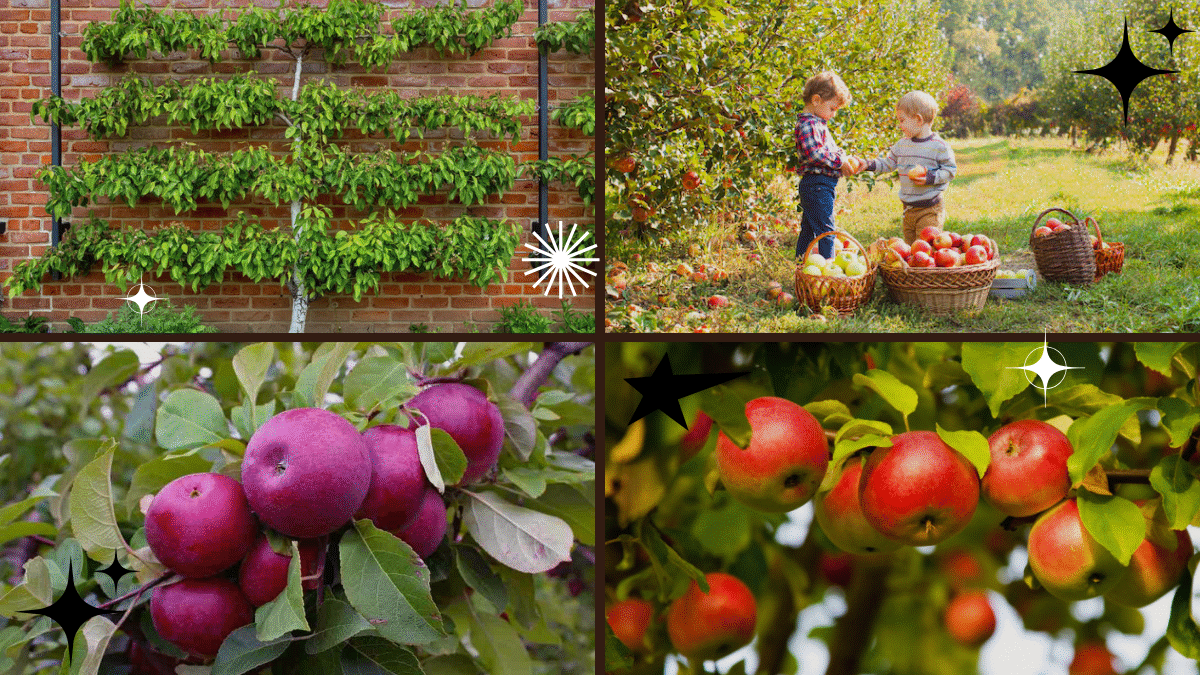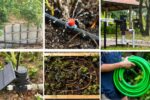There’s something undeniably satisfying about walking into your backyard and plucking a fresh, crisp apple straight from your own tree. Homegrown apples not only taste better, but they’re also free from synthetic chemicals and packed with nutrients. Whether you’re a seasoned gardener or a complete beginner, planting an apple tree is a rewarding project that can provide fresh fruit for years — even decades — to come.
In this detailed guide, we’ll walk you through everything you need to know about planting an apple tree, from choosing the right variety to caring for your tree as it grows and finally enjoying your harvest.

Why Plant an Apple Tree?
Apple trees have been cherished for centuries, not just for their delicious fruit but also for their beautiful spring blossoms and contribution to local wildlife. Here’s why planting an apple tree is a fantastic idea:
- Fresh, organic fruit right at your doorstep.
- Environmental benefits, including carbon dioxide reduction and wildlife habitat.
- A beautiful addition to any garden or backyard.
- A long-lasting investment — apple trees can produce fruit for 20-50 years.
When Is the Best Time to Plant an Apple Tree?
The ideal time to plant an apple tree is during its dormant season — late fall (after leaf drop) to early spring (before bud break). This gives the tree time to establish its root system before the growing season begins.
In colder regions, early spring is often preferred, while in milder climates, late fall planting works well too.

Step-by-Step Guide: How to Plant an Apple Tree
1. Choose the Right Apple Variety
Not all apple trees are created equal. Some varieties are better suited to certain climates, while others vary in taste, size, and disease resistance.
Things to Consider:
- Climate: Check your USDA plant hardiness zone and choose a variety suitable for your area.
- Pollination Needs: Most apple trees need a second, compatible variety nearby to cross-pollinate and produce fruit. Some are self-pollinating, but even these often yield better with a companion.
- Size: Decide between standard, semi-dwarf, or dwarf varieties based on your space.
Popular Apple Varieties:
- Honeycrisp: Sweet, crisp, and perfect for fresh eating.
- Fuji: Firm and juicy with a long shelf life.
- Gala: Mildly sweet and great for snacking.
- Granny Smith: Tart and perfect for baking.
- Golden Delicious: Sweet and mellow flavor.

2. Select the Perfect Planting Site
Apple trees love sunlight and well-drained soil.
Ideal Site Conditions:
- Full sun — at least 6-8 hours a day.
- Well-drained, loamy soil with a slightly acidic to neutral pH (6.0-7.0).
- Good air circulation to reduce disease risk.
- Avoid low-lying areas where cold air and water may settle.
3. Prepare the Planting Hole
Digging the proper hole is crucial to the health of your apple tree.
How to Dig:
- Make the hole twice as wide and about the same depth as the root ball or bare roots.
- Loosen the soil around the edges to help roots spread easily.
- If the soil is heavy clay, amend it with compost or organic matter for better drainage.
4. Plant the Tree
Depending on whether you have a container-grown tree or a bare-root tree, planting steps slightly vary.
For Bare-Root Trees:
- Soak the roots in a bucket of water for 1-2 hours before planting.
- Make a small mound of soil at the bottom of the hole.
- Spread the roots out over the mound.
- Position the graft union (the bulge where the tree was grafted onto the rootstock) 2-3 inches above soil level.
For Potted Trees:
- Remove the tree from its container and gently loosen the roots.
- Place it in the hole at the same depth it was in the pot.
- Ensure the graft union sits above soil level.
Backfill and Water:
- Fill the hole with soil, gently tamping it down to remove air pockets.
- Water thoroughly after planting.

5. Mulching and Protecting Your Tree
Apply a 2-4 inch layer of mulch around the base of the tree (but not touching the trunk) to retain moisture, regulate soil temperature, and reduce weeds.
Tree Protection Tips:
- Use a tree guard or mesh to protect young trunks from rodents and deer.
- Stake the tree if it’s in a windy area or has a weak root system.
6. Watering and Fertilizing
Watering:
- Water deeply after planting and keep the soil consistently moist for the first growing season.
- Afterward, water regularly during dry spells, especially in hot summers.
Fertilizing:
- Avoid fertilizing at planting.
- In the second year, apply a balanced, slow-release fertilizer in early spring before new growth begins.
7. Pruning and Shaping
Pruning is essential for healthy growth and abundant fruit production.
Pruning Basics:
- Prune in late winter or early spring while the tree is still dormant.
- Remove dead, damaged, or diseased branches.
- Thin out crowded branches to improve light penetration and air circulation.
- Train the tree to a central leader (one main upward-growing trunk) with well-spaced side branches.
8. Pollination and Companion Planting
As mentioned, most apple trees require cross-pollination. Planting a second, compatible variety within 50-100 feet increases fruit production.
Companion Plants:
Consider planting bee-attracting flowers like lavender, clover, or wildflowers nearby to improve pollination rates.
9. Dealing with Pests and Diseases
Apple trees can be prone to pests like aphids, codling moths, and diseases like apple scab and powdery mildew.
Preventative Measures:
- Keep the area around the tree clean.
- Prune regularly for good air circulation.
- Use organic sprays or neem oil if necessary.
- Encourage beneficial insects like ladybugs and lacewings.
Enjoying Your Fresh Apples
Depending on the variety and tree size, apple trees typically start producing fruit 2-5 years after planting. Dwarf varieties bear earlier, while standard trees take a bit longer.
Harvest Tips:
- Apples are ready to pick when they’re firm, colored, and easily come off the branch with a gentle twist.
- Taste a few for ripeness — flavor is your best guide.
- Store apples in a cool, dark place or refrigerate them to extend freshness.
Final Thoughts
Planting an apple tree is a simple, meaningful project that yields delicious results for years to come. From the beauty of its blossoms to the joy of your first harvest, this timeless tree is a valuable addition to any garden or backyard.
By following these steps — choosing the right variety, planting it correctly, and caring for it through the seasons — you’ll soon be savoring homegrown apples, straight from your own tree.
So why wait? Grab a shovel, find a sunny spot, and plant an apple tree today!





Leave A Comment